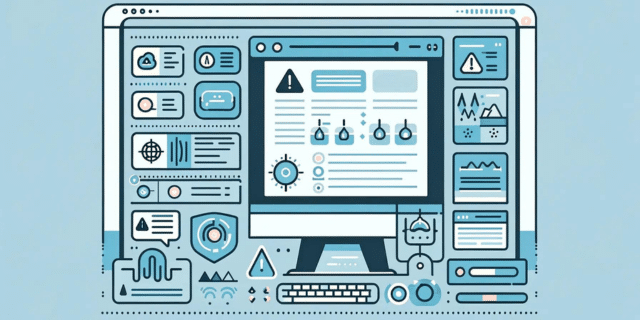SaaS monitoring often means one of two things:
- Technical monitoring tools/services for SaaS applications in your own tech stack
- Technical monitoring tools/services for the stack of a product company delivering a SaaS solution
In this piece, we’ll be taking a look at both. Hence the choose-your-own-adventure format of this article.
Case 1, monitoring internal 3rd-party SaaS solutions
Turn to page 13. The king’s Salesforce instances are offline!

Why’s this important?
Many companies rely on 3rd-party SaaS services to perform key business functions. From chatbots to deployments, they’re baked into your day-to-day.
However, the dashboards and insights provided by the SaaS products themselves often fail to show the whole picture.
Because what you don’t know can hurt you
Although in theory you’re protected by your SLA (service level agreement), the provider can only supply data on their own infrastructure, meaning there may be sub-SLA performance going on as a result of how their product is interacting with your overall stack.
A 3rd-party SaaS monitoring service provides that extra layer of objectivity, allowing you to hold service providers to SLAs, get end-to-end observability on your environment and rest easy.
3 core vitals (and how to monitor them)
Infrastructure
Monitoring your own servers and environment is vital. Without this, you will be unable to tell whether performance issues are the fault of the SaaS provider or your own infrastructure.
Gaining visibility on your own servers allows you to police provider SLAs, and forces your partner to pay-up or step-up when they fall short – as you’ll be able to prove you’ve got everything under control your end.
In the counter scenario, performance issues that are down to your own servers can be spotted and rectified quickly.
There are many tools and service-based options for infrastructure monitoring, and the choice will come down to whether you have a team in place to resolve issues 24/7.
If you do, you may just want a tool like DataDog to give your team the visibility they need.
However, if you’re a normal person without access to highly skilled cloud engineers…globally…at the drop of a hat…24/7, 365…you can always try a monitoring-plus-support approach.
Service dashboards
Most SaaS solutions come with their own dashboards.
If they’re integrated deep into your stack, these dashboards will feature a lot of very useful information. But you don’t want yet another data silo.
Who watches the watchmen? You do.
Monitoring solutions like those already mentioned can pull these RSS feeds and logs into a single bird’s-eye view, giving your team complete visibility of your overall stack.
They can also verify information coming from the vendor and grant extra insights into application performance.
Operations
With SaaS products like Salesforce being deeply connected to your operations, having a single point of truth for DevOps can be invaluable.
Relying on the monitoring tools built into SaaS applications means a very partial window into what’s going on under the hood. This leads to finger-pointing, dropped balls and roaming bucks, never to find a restful stop.
Integrating monitoring tools into your DevOps process or your DevOps provider’s workflow creates a canonical record of events, and helps your team stay on the same page.
Case 2, monitoring your own SaaS product
Turn to page 12. Your majesty, we bring you SaaS monitoring tools the likes of which the kingdom has never seen.

Why’s this important?
This is a more straightforward case. SaaS monitoring is important for many of the same reasons normal monitoring is: to deliver insights into your application’s performance, to ensure your application remains up and delivering to customers and to give support teams the resources they need to prevent outages.
Because of all the usual reasons…plus
Monitoring and incident management are important for SaaS businesses in particular because of the low barrier to adoption – and desertion.
If a SaaS application fails to deliver a seamless experience, is frequently unavailable or finds itself clogged up with unreleased updates due to poor DevOps, users will take their business elsewhere.
3 core vitals and how to monitor them
Infrastructure monitoring
As in the case of internal SaaS monitoring, monitoring your servers, databases etc. is highly important.
This allows you to ensure your application remains up and serving customers, helps you identify performance issues and exposes cost patterns.
However, monitoring your infrastructure isn’t always straightforward.
Most SaaS applications are now built with complex, distributed cloud-native architectures.
Microservices, containers and serverless present headaches for regular SaaS monitoring tools because they’re much more dynamic than standard environments.
Luckily, the tools move with the times, and a quick Google search will reveal a plethora of specialised monitoring tools/services to get under the hood of more dynamically engineered SaaS apps.
In the case of our own SaaS monitoring and support service, Mission Control is the knight in shining armour, allowing our engineers to draw every thread of a disparate, dynamic infrastructure into a single bird’s-eye view.
Synthetic monitoring
Synthetic monitoring tools simulate real-world conditions.
They can be used to see how your application deals with heavy traffic, what happens when a user fills out a contact form, calls an API or visits from a specific country.
This is achieved using scripts to simulate real-world users.
Because this is a more technical exercise, it’s often served via a tool approach rather than as a service.
Many SaaS monitoring tools will contain an option for synthetic monitoring, though service-based teams may do the same.
Website monitoring/uptime monitoring
An uptime monitoring tool will simply send a signal to your site to determine if it’s up or not.
This is a less complex form of SaaS monitoring, but the service or team behind the curtains makes all the difference.
In the case of an outage, you need people with in-depth knowledge of your application, access to all the types of monitoring we’ve already covered plus access to your infrastructure, app and everything else.
Plus, they really need to know what they’re doing.
This can be handled internally, but many SaaS businesses struggle to meet that capacity 24/7, 365.
The goal of this kind of team is to be able to tackle any issue, any time of day, so unless you have a truly global company with the resources to place specialised support engineers in each continent, it’s often cheaper to outsource this to an out-of-hours/24/7 SaaS support provider.
How we can help
Whether you’re looking to get application performance monitoring on an internal SaaS resource or support your product, we’ve got you covered.
As the go-to support people, we’ve delivered monitoring and support projects for global SaaS brands.
You can read about our work with:
- On-demand fitness and nutrition app The Body Coach
- LegalTech SaaS company StructureFlow
- Digital HR and payroll SaaS solution Paylocity
- Cyber security SaaS platform Absolute Software
Supported by our own monitoring solution Mission Control, our global team of engineers is on hand to ensure your app stays on 24/7, and with a roster of cloud architects and application gurus in tow, we can help you monitor, build, optimise and deliver just as well.
So, to get your SaaS application monitored and supported, just get in touch.




